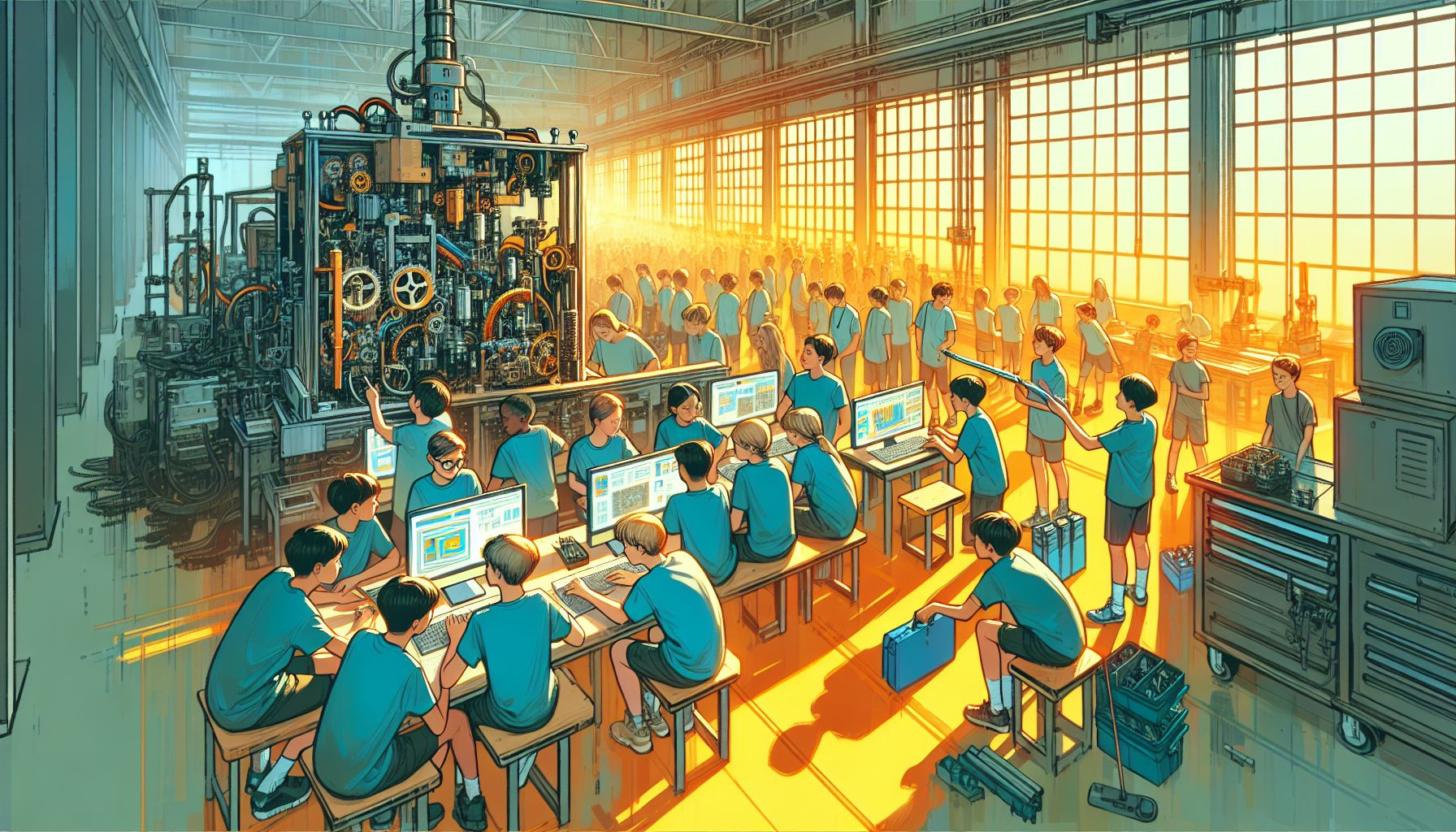Engineering Camps Spark Innovation in Next-Gen Workforce

Delft, Monday, 15 July 2024.
STEM camps are inspiring future engineers through hands-on experiences. With a 400% increase in demand since 2020, these programs offer students aged 12-15 practical skills in coding, prototyping, and advanced machinery use. Industry tours dispel misconceptions about manufacturing environments, showcasing safety priorities and career opportunities.
Addressing Workforce Gaps Through STEM Initiatives
Industrial sectors are grappling with workforce shortages and skills gaps, prompting a rise in initiatives aimed at cultivating the next generation of engineers and manufacturers. Programs like the Academy of Advanced Manufacturing and community college STEM camps are at the forefront of this movement, offering youth hands-on exposure to high-tech manufacturing skills. These initiatives not only equip students with practical skills but also aim to inspire a passion for engineering and manufacturing careers.
The Role of Engineering Education
Engineering education is crucial in fostering a mindset of innovation and problem-solving. Dr. Alan MacBeath, Head of Faculty for Physical Sciences at Lomond School, emphasizes the importance of introducing such education at the high school level to bridge the gap in the engineering workforce. Lomond School, for instance, has introduced a Higher National Certificate (HNC) in Mechanical Engineering as part of their International Baccalaureate Careers Programme (IBCP), blending academic and practical studies to inspire students to pursue higher education or careers in engineering[1].
Collaborations and Real-World Applications
Collaborations between educational institutions and industry partners are essential for providing students with real-world experiences. For example, Rolls-Royce’s Advanced Air Mobility teams in Europe work with universities to develop understanding of Urban and Regional Air Mobility applications, offering interns opportunities to engage in projects that will shape the future of travel. Students gain hands-on experience with advanced technologies such as electrical machine design and electromagnetic simulations, preparing them for careers in a rapidly evolving industry[2].
Innovative Learning Environments
University-based Learning Factories replicate manufacturing operations, providing next-generation engineers with hands-on learning opportunities. These educational environments are designed to overcome barriers by enhancing infrastructural capabilities, utilizing technologies like 3D simulations and Real Time Locating Systems (RTLS). This integrated approach enables accurate tracking and modeling of manufacturing processes, offering a multi-dimensional array of educational experiences that bridge the gap between academia and the manufacturing landscape[3].
Global Camps and Local Impact
STEM camps are not limited to local initiatives; they have a global reach. For instance, the Next Engineers Greenville camp at Clemson University in South Carolina selected 100 students for a week-long engineering exploration. Campers worked with engineers from various fields, participated in design challenges, and interacted with university students and faculty. Such camps provide a unique opportunity for students to envision themselves as future engineers, fostering a sense of global citizenship and collaboration[4].
Conclusion: A Bright Future for Engineering
The increasing demand for skilled engineers highlights the importance of cultivating the next generation of innovators. Through STEM camps, educational programs, and industry collaborations, students are gaining the skills and inspiration needed to fill critical roles in the future workforce. As these initiatives continue to grow, they promise to shape a sustainable and prosperous future by empowering young minds to become leaders and changemakers in the field of engineering.
Bronnen
- www.scotsman.com
- www.rolls-royce.com
- link.springer.com
- www.nextengineers.org
- www.chemicalprocessing.com

